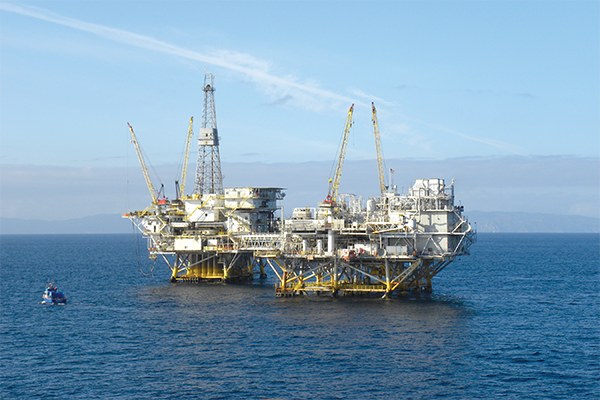
Students Excel in PETSM Program at Nicholls
September 12, 2018
Only Time Will Tell
September 12, 2018ONE ENERGY EXPERTS THINKS SO… AND HE BELIEVES IT’S COMING SOON
A chart of day-to-day oil prices in the past month reads a bit like a roller coaster — it’s full of ups, then downs.
The price of oil started at around $68/barrel on Aug. 1, then fell gradually to around $66.50/barrel in the first 10 days of the month.
On Aug. 15, prices plummeted more than $2 in a day, sinking the price below $65/barrel — the lowest it’d been since early July.
But since then, the valley is over and the price is heading back to a peak, sitting at near $70/barrel at press-time in the first week of September.
This is not abnormal.
Oil prices ebb and flow daily. We just don’t notice it unless we follow the trends literally every, single day.
It goes up, then it goes down slightly — all within a price range of $65-75/barrel when the global supply is the way political leaders want it.
But what if that market destabilizes? What if supply suddenly becomes too abundant or too scarce? That’s when we can see abnormally high or low prices.
And according to one prominent oil and gas expert, at least, that’s exactly what’s going to happen to the price of oil in the coming months.
Energy expert John Kilduff released information this month, saying that he believes the final months of 2018 will see oil prices “shoot through the roof,” rising to levels that the country has not seen since 2014.
His prediction is that oil prices will rise so high that the price of gasoline nationally will be greater than $4/gallon by the end of the year.
“It’s coming,” Kilduff said. “I think it’s going to get higher than people realize.”
Kilduff then gave details into why he is making such a claim.
He said that economic sanctions against Iran are going to cripple the country’s supply — at a rate greater than we currently realize.
As this happens, he believes the global supply of oil will drop drastically, which will, based on the rules of supply and demand, bring the cost shooting up.
There is evidence to back up Kilduff’s claim about the impact of sanctions. In a story on Reuters.com and Reuters TV, Stephen Brennock, an analyst at London brokerage, said that there is a lot of talk on the global market about Iran’s supply being depleted in the coming months.
Iranian production has dropped drastically in the past few months. In last month alone, the global oil power drops its production by more than 150,000 barrels per day (bpd). That 150,000 bpd multiplied by the 30 days in a month mark a cut of 4.5 million barrels — a huge loss from the global supply market.
“Exports from OPEC’s third-biggest producer are falling faster than expected and worse is to come ahead of a looming second wave of U.S. sanctions,” he said. “The fear of an impending supply crunch are gaining traction.”
But there’s another wrinkle that Kilduff said isn’t being considered.
U.S. sanctions against Iran are not new. Our country has had a tumultuous relationship with the Middle Eastern country for decades.
But for a lot of those times, the United States was in a national recession. Today, our economy is arguably greater than its ever been, which means that more humans are buying homes, driving cars, taking trips via airplanes.
Long story short, the average Joe has more money, so he’s using more oil now in his day-to-day life. This means that the United States is using more oil than in previous years, which, when added to a lessened supply, will further lift the price.
“Everybody has a job,” Kilduff said. “Everybody is driving to that job. They’re going to continue to drive to that job no matter what gasoline costs. They have to.”
If that happens, it will be good for locals, even if we are squeezed at the pump.
High oil prices mean that deepwater drilling is highly profitable, which will start our local economy into an uproar — just like it always does when oil prices tip into that $85-100/barrel range.
When oil prices get higher, companies in the Gulf of Mexico do more deepwater drilling, which is where the biggest of the big money is made in our local economy. That business, of course, trickles down into all of the supporting companies of the oil and gas industry locally and trickle into all other realms of the economy.
But other forecasters do not have the same ideas as Kilduff.
A report by OilPrice.com rivaled Kilduff’s and said that as supply drops, other countries raise their output and keep the market stable.
The report says that oil will be stable for the next year, as OPEC and international relations have gotten better.
It cites that even with the dip in Iranian production, there are still 32.79 million bpd exported, which is a high number. Libya has done work to boost its production, which offsets the loss. The United States has also increased its drilling, as well. National rig counts rose by 2 last month and now sit at 862 total.
The report by OilPrice said that another factor not being considered by Kilduff is that President Donald Trump’s tariffs on other nations is hurting their economies significantly, which will offset our increased demand for oil because other countries will utilize less than normal. In China, tariffs have almost halted the powerful nation’s manufacturing — the fifth-straight month that industry drops in production.
“All of these activities will stabilize the price for the next 12 months,” the report reads.
Experts at Port Fourchon said that the higher the price of oil is, the better, but added that we are well within a comfort zone of profit margin. Port CEO Chett Chiasson said break-even points are less than $50/barrel and are as low as they’ve been in years, thanks to President Donald Trump’s administration working to limit regulation, thus lowering the cost to drill. •









